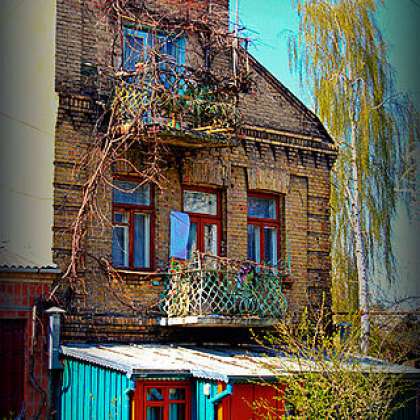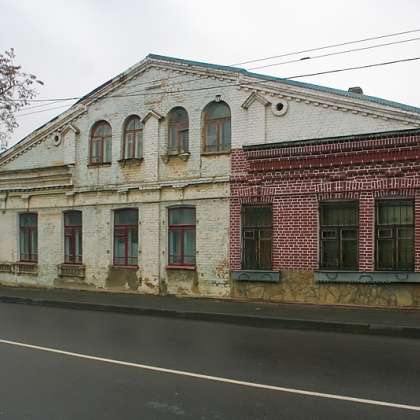How has the face of Lutsk changed? The history of three Jewish quarters
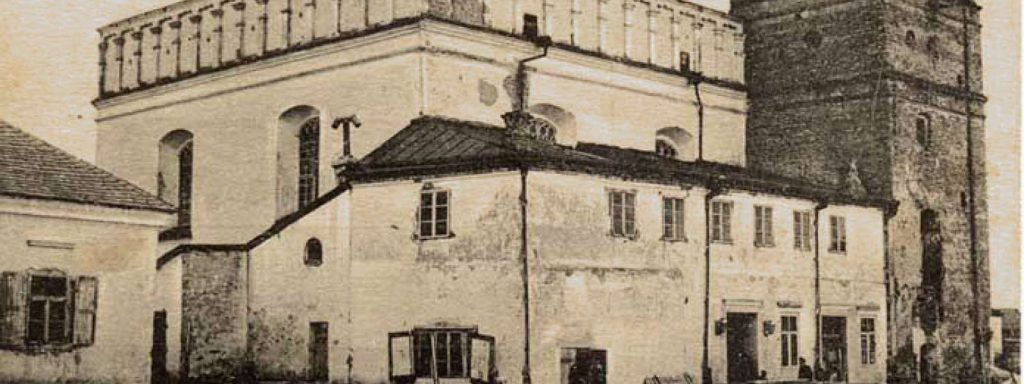
Regional historian Oleksandr Kotys talks about the lost city, the small, narrow streets of the Jewish quarters, and the rise of the Lutsk ghetto.
In the center of Lutsk stands the eighteenth-century Great Synagogue. Permission for its construction was given by King Sigismund III of Poland. In 1942 the synagogue was nearly entirely destroyed. It was rebuilt in the 1970s, and today houses the offices of the Dynamo Sports Club. Over a number of centuries, a Jewish quarter developed around this structure.
If you walk down Danylo Halytsky Street, you will end up at Mokryi Luh [“Wet Meadow”], another center of Lutsk Jewry. It is difficult to locate because hardly any ancient Jewish buildings remain in this district. It is also difficult to find vestiges of Jewish culture in the northern part of the city, where the chaotically overbuilt shtetl of Vulka once stood. The regional historian Oleksandr Kotys explains why this county town had as many as three Jewish quarters and how their inhabitants disappeared.
Oleksandr Kotys: Historically, there was only one quarter—the old city, the former insular section of Lutsk, which was washed by rivers and swamps. There was a district where Jews lived as early as the fifteenth century; that is where the brick synagogue was located. That was the situation until the early nineteenth century.
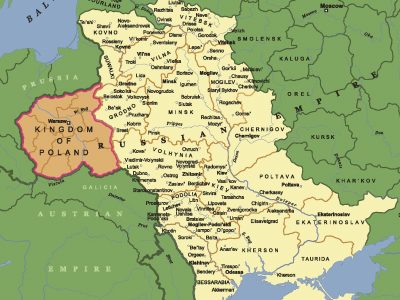
What changed? After the partitions of Poland, Volyn became part of the Russian Empire, where special laws governing where Jews could live were in force. First of all, the Pale of Settlement. Jews could live only in certain gubernias in the Russian Empire. Second, there was a number of administrative and economic restrictions. Despite this, the situation developed in such a way that the size of the population increased.
There was a physical lack of space in the old Jewish district that arose in the historical part of the city. And so Jews began to settle in so-called Mokryi Luh. This is not the name of the Jewish district; it is simply the swampy part of Lutsk. And Jews began living there from the nineteenth century. The third district was Vulka. This was a village near Lutsk; Ukrainians and Poles lived in one part, and Jews in the other. When Vulka was merged with Lutsk, a new district where Jews live appeared in the city.
Andriy Kobalia: Did three different groups of Jews live in these three neighborhoods? Were they connected somehow? Was it possible for a single family to inhabit two neighborhoods?
Oleksandr Kotys: It is difficult to determine whether these were different groups or just one. If we are talking about the old district that is called Zhydivshchyna in documents, and Mokryi Luh, which derived from it, then these were definitely people who were relatives. When space became cramped, a group would move to Mokryi Luh. For example, the parents would remain in Zhydivshchyna, and the children would settle in Mokryi Luh. Those who couldn’t would cobble together some small homes.
Andriy Kobalia: If we are talking about the background to our conversation—and this is the late nineteenth–early twentieth centuries—then during this period in Stanyslaviv, known today as Ivano-Frankivsk, in Austro-Hungary, economic competition existed among Jews, Poles, and Ukrainians. Was there something like this in Lutsk? Were there conflicts? How did the groups co-exist?
Oleksandr Kotys: No conflicts are recorded. Why did it happen this way? Because the districts where Jews did not live were sparsely populated. In Lutsk in the late nineteenth century Jews comprised nearly eighty percent of the population. There was no one with whom to compete unless there was internal competition, between the richer and the poorer.

Andriy Kobalia: And who were the other twenty percent?
Oleksandr Kotys: Ukrainians, Poles, Russians, Karaites, Czechs, and Germans. This was an essential minority that at the time did not represent competition. In leafing through archival documents from the late nineteenth–early twentieth centuries, and the papers of enterprises or small shops, I noticed Jewish names almost exclusively. Competition could have existed within a group.
Already after the First World War, when Volyn became part of Poland, competition with the Poles, whom the state supports, appears. But many Jews remained nonetheless, and this did not lead to conflictual situations on religious or national grounds—at least I am not aware of any.
Andriy Kobalia: I think that it would be worthwhile for us to go back two decades, to the interwar period. Speaking of conflicts and the Jews, I remember the wave of pogroms that swept through the Russian Empire in the fall of 1905. They took place in Odesa, Katerynoslav, in today’s Dnipro, in Mariupol, Kyiv. But Lutsk as far as I know is one of a few cities in the Russian Empire where no pogroms took place. Why? How did this happen?
Oleksandr Kotys: No pogrom indeed took place. We knew that it could have. We know about this not from documents but only from one book of reminiscences of a soldier in the Kamchatka Regiment that was based in Lutsk. There were several regiments based there. One of the officers in this regiment, Leon Berbetsky, kept a memoir in which he wrote that a group of people in Lutsk tried to organize a pogrom around 1905 or 1906. But they failed to keep their plans secret, and the Jews of Vulka found out about this and decided to take the bull by the horns and act. They asked the officers of the Kamchatka regiment for assistance. How was this done? Leon Berbetsky was in the group of officers who helped collect eighteen revolvers for the Jews of Vulka. The revolvers were indeed given over and the Jews spread rumors that there were weapons in Vulka and that it would be dangerous to attack them.
According to the officers’ descriptions, the day that the pogrom was supposed to take place arrived, but nothing happened, perhaps because of the rumors and the fact that the Jews really did arm. This is the only mention. There are no mentions of a pogrom either in memoirs or documents.
Andriy Kobalia: “Miserable, little, wooden buildings, smoky Jewish taverns, rickety little houses. New buildings without faith in the future, as though cobbled together for a single day, old, so much so that they are falling down and are propped up, among them the burned posts of burnt buildings. The street is covered with a wooden platform instead of being paved—this is what we saw.”
That is what the nineteenth-century Polish journalist Józef Kraszewski wrote about the Jewish quarters. The regional historian Oleksandr Kotys described how Lutsk looked in the late nineteenth–early twentieth centuries.
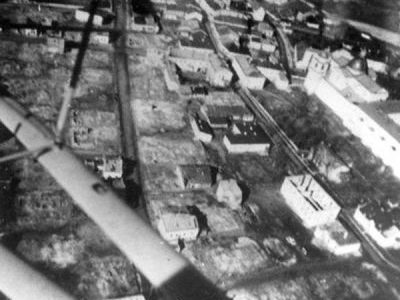
Oleksandr Kotys: On the one hand, this was a city that had picturesque ruins, and, on the other, Lutsk became a city with the features of a Russian county center. A lot of people came to describe the place: artists, writers, ethnographers, historians, and travelers. At the time, this Romantic movement was very popular. Picturesque ruins often figure in the descriptions. The city did not look like something contemporary which represents development, but like a vestige of the past plus Jewish taverns. These are the phrases found in texts about the city.
Andriy Kobalia: The main heroes of our conversation are the three neighborhoods: Zhydivshchyna, Mokryi Luh, and Vulka. They differ visually from each other. This is also evident in photographs and from those few ancient buildings that I myself saw. In Vulka and Zhydivshchyna buildings stand next to each other. You write about this in your articles. There are more brick buildings in Mokryi Luh, and you see them more often. But the architecture that is intrinsic to the Jews in these areas is more evident in the poor neighborhoods than in Mokryi Luh, where the buildings are constructed in a style that was typical in the empire at the time. Why did wealthy Jews build like the Ukrainians or Russians or others?
Oleksandr Kotys: It’s worth starting with the fact that there is no distinctive Jewish architecture. There is an economic substratum to what we saw. For example, let’s take the poor Zhydivshchyna quarter. This is a historical district, where many people lived compactly. When a family became larger, there was no money, as a rule, for a separate house for the young married couple. That is why a small structure was added on to the existing building. They might add another section after some time. That is why the housing system was chaotic.
On the other hand, if we are talking not about the streets inside the quarter, of which there were hardly any, but about wide city streets, then economic motives influenced everything. Every meter of a street was economically saturated. People could not permit themselves to build a house with a very wide façade. Therefore, a narrow part faced the street. As a rule, there is one window as well as the entrance to a small shop, and the residential part extended deep into the quarter. That’s why you have a street, and the buildings are situated perpendicularly to it. Of course, everything was cramped, unsanitary, and dangerous prone to fires.
Andriy Kobalia: In August 1914 the First World War begins in Europe, and Western Ukraine is at the epicenter of battles on the Eastern Front. Lutsk ends up near the front, and in certain months the city is right on the front line. The regional historian Oleksandr Kotys talked about how the city was controlled successively by various forces and regimes.
Oleksandr Kotys: In fact, during the First World War the city did not suffer very much. A few buildings were bombed. This is clearly seen in photographs. Here one can mention the consequences of the Austrian occupation, which lasted literally for nine or ten months. This did not have a strong impact on Jewish life. During the war there were some problems with food and sanitation. When the sanitation committee was being set up, the threat of an epidemic appeared, and the poorest Jews were forcibly removed to areas where they were washed and had their hair cut in order to prevent the epidemic from spreading. In those years at the beginning of the twentieth century and in the First World War during the occupation there were many epidemics and it was harder to survive. But documents state the sanitation committee prevented the spread of epidemics and this was tied to the fact that the Jews, the poorest Jews, were forcibly washed.
Andriy Kobalia: After the First World War and the war between the ZUNR [Western Ukrainian National Republic—Trans.] and the Second Rzeczpospolita, Volyn became part of Poland. Interwar architecture is visible in the city. Returning to the main heroes—the three Jewish quarters—if you walk around Vulka, you can barely tell that this was once a Jewish quarter. And this is connected with the Second World War. What took place here during the war?
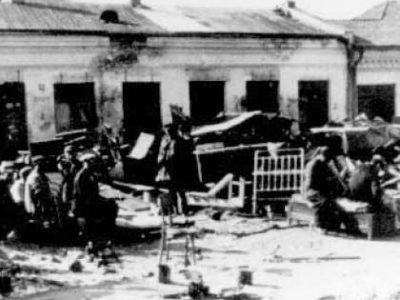
Oleksandr Kotys: The Second World War affected the Jews of Lutsk, like everywhere in Europe. The Nazis came and exterminated them. This happened not only to living people but also to the buildings in which they lived, prayed, and traded. This is seen clearly in aerial photographs that the Germans took. The areas in which the Jews lived look erased. There are simply no buildings there. This is because they were set on fire and blown up. In 1943 they blew up the synagogue.
True, they did not destroy it completely, because this early-sixteenth-century structure has very thick walls, and it was built for defensive purposes. Perhaps they did not take this into account or did not want to destroy it entirely. It was bad enough that half of it collapsed, and no one ever prayed there again. Mokryi Luh was not very affected because Vulka and Zhydivshchyna were more distinctly Jewish. In aerial photographs Vulka looks like an erased area. Three or four buildings where Jews lived are standing to this day. In fact, there is nothing: neither the color of the building nor those streets.
But there is a Jewish school named after Moisei Gliklikh. The Gliklikhs were a wealthy Jewish family. For example, Abram was the owner of a brickworks that produced bricks for half the city. Moisei Glicklikh founded a Jewish gymnasium. During the Nazi occupation a workers’ ghetto was located there. We do not even have a single document about what truly took place there. We know this history from the memoirs of one old Jewish man.
Andriy Kobalia: This old man’s name is Shmuel Shulman, or Shmulik Shylo. He was born in Lutsk in 1929, and on 12 December 1942 he escaped from the ghetto when the uprising began there. In 2015 the Yad Vashem World Holocaust Remembrance Center recorded an interview with Shulman. “The Germans arrived and shouted: ‘Come out! Jews, out!’ There were barricades there and [the Jews] began throwing axes, dishware, whatever they could. Ukrainian policemen arrived, and the battle began. Until [the Jews] surrendered. This lasted all day. And I was hiding in some peat. But I could not hide myself fully. Then a couple appeared; it is thanks to them that I stayed alive. They hid me. The wife was pulling the husband by the arm and saying, ‘Let’s think of ourselves, why are you thinking about him?’ And he replied: ‘He’s still a child, he will live.’”
That day nearly five hundred Jews were killed, and the ghetto was liquidated. Now there is a college on this site. Only a small plaque on the wall of the building recalls the events of 1942. However, most of the Lutsk Jews were killed not during the uprising but several months earlier. From 19 to 23 August 1942 approximately seventeen thousand Jews were shot in a suburb of Lutsk. Rachel Zaidman survived that day. In 2015 she recounted the events of August 1942 to Yad Vashem.
“We were brought in vehicles to this place. They told us to stand with our backs [to them]. And they began shooting with a machine gun. I probably fell down and lost consciousness from this horror. I no longer know,” Rachel Zaidman recounted.
Another couple of thousand Jews were shot in September of that year. According to data compiled by Yad Vashem, 25,600 Jews were exterminated outside the city during the occupation. At present in Ukraine, at the places where the Jews were shot, you can often see Soviet-era plaques stating that Soviet citizens perished there. But the Jews died there not because they were citizens of the USSR. They may have been or not. The regional historian Oleksandr Kotys explained the current policy of memorializing the Holocaust in Lutsk.
Oleksandr Kotys: If we are talking about memorialization, then we can find five markers in Lutsk today. Two of them are installed at the sites of former Jewish cemeteries, and three are connected with events that took place in the 1940s. One is at a shooting site. Another one, on the synagogue, recounts its history and mentions the victims of 1943, and another is hanging on a wall of the gymnasium, where the uprising took place. One of several Jewish societies deals with memorialization. There are two in Lutsk: a progressive community of Judaists and an Orthodox community. The first one is slightly larger. As far as I know, these markers were installed on their initiative and at their cost. In other words, it is mostly Jews themselves who are engaged in memorialization. As far as I know there is no municipal program.
Andriy Kobalia: During the occupation of Ukraine, the majority of Jews died here. But earlier you said that the main part of the population of Lutsk was comprised of Jews. In other words, after the end of the war in Lutsk, when the Soviet armies expelled the Nazis from there in 1944, had most of the population of the city been killed already?
Oleksandr Kotys: Yes. This was a huge demographic catastrophe for Lutsk. Before the war, 60 percent of the population consisted of Jews, and at the beginning of the century, some 92 percent. You can imagine that sixty percent of the city residents were simply liquidated over a few months in 1943. Forty percent were left. And of this forty percent of the non-Jewish population, there were mostly Poles, who were simply leaving for the West. There were also some Czechs, Germans, Karaites, and Ukrainians whose fate developed differently.
As a rule, the Czechs, Germans, and Karaites also left. Some managed, others did not. Some did not survive. These events were a major demographic rupture because the Jews and part of the intelligentsia of Lutsk that developed during the interwar period was destroyed. During the war it was simply exterminated. This was followed by the same scenario that unfolded in other Ukrainian cities. Factories appeared here, residents of surrounding villages or other cities arrived here. The colorful and distinctive face of the city as it was until the Second World War, was completely erased and transformed into the way other cities look like in Ukraine.
Andriy Kobalia:
- Khana Flom, seamstress
- Beniamin Muchniver, son of Mindel the tradeswoman
- Khava Adres, housewife
- The gymnasium student Feiga Aizerberg, and her sister, Basia, mother, Devora, and father, Hershel
- Yosef Shneider, butcher
These are just a few surnames of Jews from Lutsk who did not survive the Holocaust. The ancient Jewish quarters burned down, and the Jews were almost totally exterminated. The carriers of other cultures, for example, Polish or German, also became less numerous in the city, either because of the war or repressions or postwar emigration. After the end of the Second World War, the face of Lutsk changed almost completely. The old buildings no longer had the sense that had been accorded to them by those who had built them. For example, the ruins of the Great Synagogue were turned into a sports club.
This program was made possible by the Canadian non-profit organization Ukrainian Jewish Encounter.
Originally appeared in Ukrainian (Hromadske Radio podcast) here.
Translated from the Ukrainian by Marta D. Olynyk.
Edited by Peter Bejger.
NOTE: UJE does not necessarily endorse opinions expressed in articles and other materials published on its website and social media pages. Such materials are posted to promote discussion related to Ukrainian-Jewish interactions and relations. The website and social media pages will be places of information that reflect varied viewpoints.







